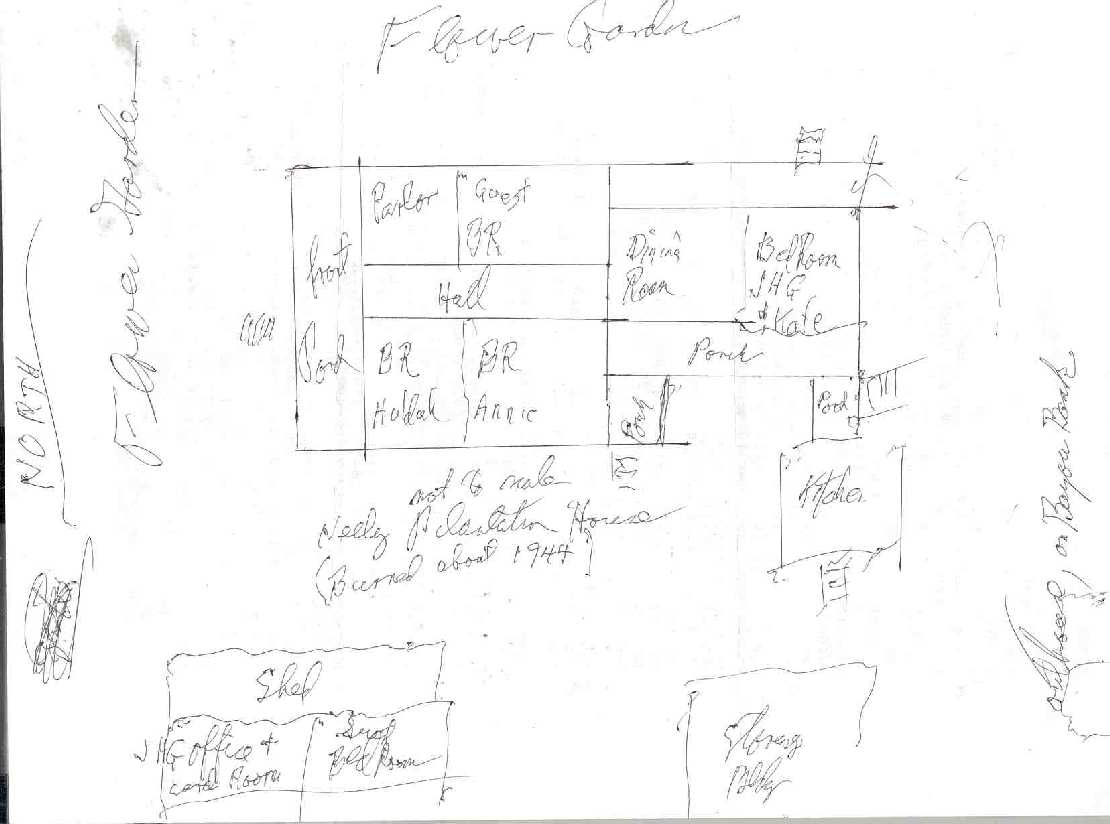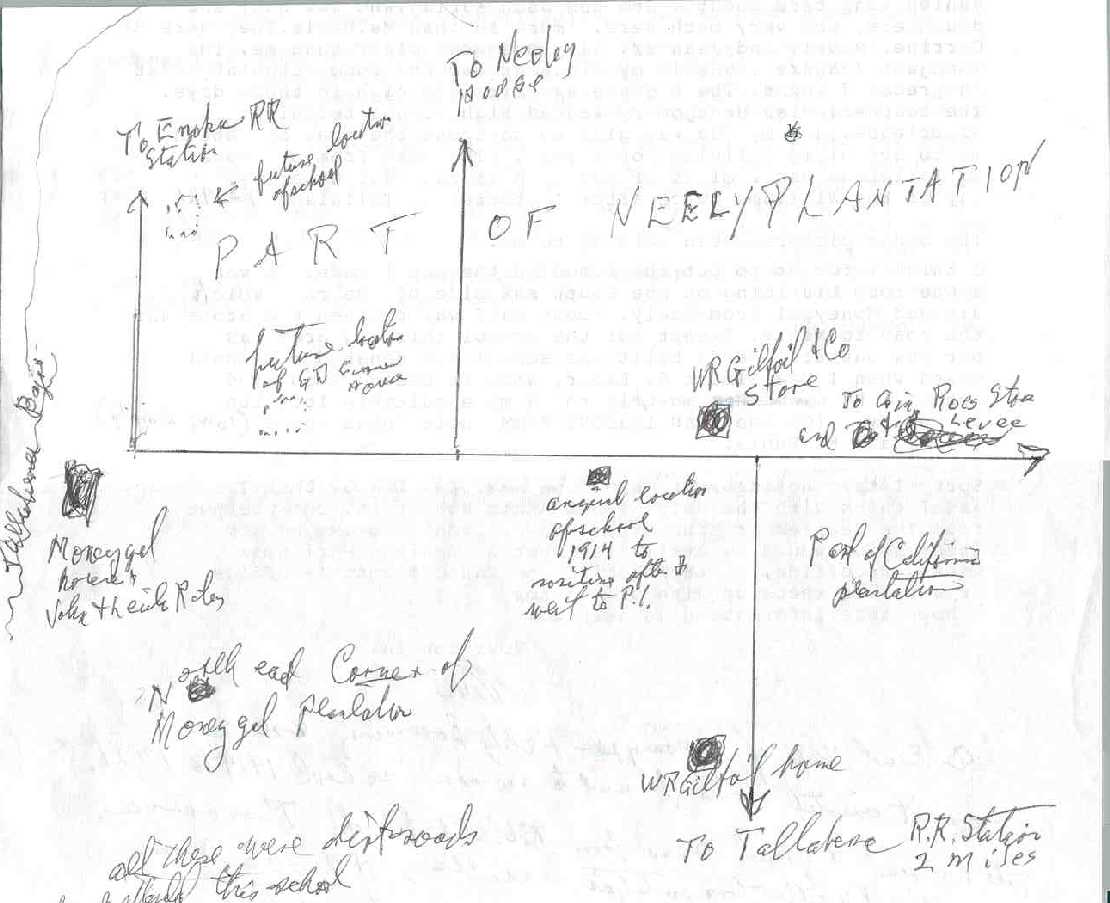THE DEAR HEARTS AT NEELY - MAY THEY LIVE IN US
After "the war", as Aunt Annie relates in her lengthly account of the family, they returned to Louisiana from Texas to nothing - no house, she said. "Papa", W. C. Currie, had to go into the forrest and chop down trees and finish the lumber with hand tools for a "two room", which was "tiresome work". This was in 1869. Now, I don't know what they called this place. There was a Monegal Plantation, a Pecan Grove Plantation and a Neely Plantation. The name Monegal was the name of the village in Ireland, from which Patrick Gilfoyle, Aunt Kate Currie's father-in-law, came to America. And, he was a vet as well as owner in a steamboat at Vicksburg, (Biographical and Historical Memoirs of Louisiana, vol. I, published 1892, p. 443).
Aunt Annie was only nine years old in 1869; eight maybe. When and how the family came to own Neely Plantation is still an unknown. I don't think that it was in her papa's lifetime, because in her scrapbook, she notes that he died at Monegal, in 1876. I assume that some time after his death, the family acquired, or built, Neely Plantation House, (a big house). The indication is that it was acquired, because there is a Neely graveyard near Vicksburg which is described in a newspaper article, "Vicksburesque":
 This article is in Aunt Annie's scrapbook, so it had to have been printed well over 50 years ago.
This article is in Aunt Annie's scrapbook, so it had to have been printed well over 50 years ago.
I am in touch with descendants of the Neelys; but, as of yet, we have found no connection between that family and the Neely Plantation owned by our family.
Neely seems to have been bustling with activity and good times for years, before finally burning down in 1944. The "good times there are ne're forgotten" by Belle Williams who tells us so in her poem, "Neely". Belle was a frequent long term guest of Aunt Annie's, according to 93 year old, Cousin William Gilfoil, as well as her daughters, Corrine, Revel, and Jeanne, (with whom Cousin William went to school in the one room school house, which was on the south side of the road dividing Monegal from Neely).
Cousin William has sketched the Neely House and the plantation buildings as he remembers them. He has also sketched the locations of the surrounding plantations and different places where the other Gilfoils, Rileys, Curries etc. lived.
This is a sketch of the Neely Plantation House as our 93 year old cousin, William Gilfoil, remembers it. As an after thought, he said that there may have been more rooms on the sides of the hall, "else I don't know where all of the long term guests would have stayed."
Don't ask me what happens when I scan things. They get turned around and blown all out of proportion. Still, you may get some idea as to the layout of the house. He has Aunts Annie's and Hulhah's rooms identified; also, Aunt Kate's and Uncle Jim's.

Following is a sketch of Neely Plantation Lands and surrounding plantations.
This is what Cousin William says: "There is a road now from the highway to the levee, straight except for short offset where the Roes used to have a home and store. The part from the highway to Jim's "new", the old road crossed the RR at Tallabena, wiggled around past California and our house to our store, where it joined the road now running from the levee to Jim's. There it turned N, ran to Enoka, where it joined what is now the highway to L.P., (Lake Providence).
I am not sure whether the original Gilfoil house was on this exact spot. It was burned down as were many others by Grant's troops. After the war, the Monegal house was built. It was occupied by Patrick, (Gilfoyle), until his death, then by Granddad, (JHG)..."
(Note: California and Monegal were plantations.)

 This article is in Aunt Annie's scrapbook, so it had to have been printed well over 50 years ago.
This article is in Aunt Annie's scrapbook, so it had to have been printed well over 50 years ago. 
